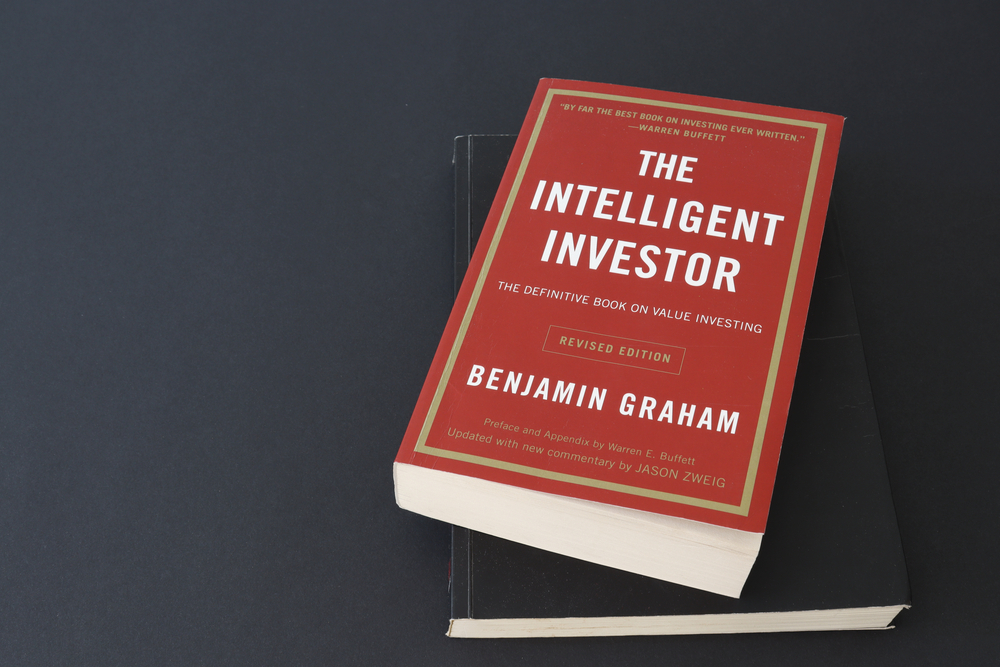Editor’s Note: Below, Nicholas Vardy highlights how you can apply the insights on “luck” found in today’s article to your own investing.
He notes that investors should be humble and credit luck more than skill for whatever success they may achieve.
Could you be lucky enough to, say, build the cornerstone for the retirement of your dreams on one stock?
Chief Investment Strategist Alexander Green thinks so.
With a little luck, this one investment could be the jackpot that comes around only once or twice in a lifetime…
Go here to see Alex’s breakthrough now.
– Madeline St.Clair, Assistant Managing Editor
Recently, I found myself thumbing through my copy of the investment classic The Intelligent Investor.
Published in 1949, The Intelligent Investor established Benjamin Graham as the father of value investing.
Warren Buffett called it “by far the best book on investing ever written.”
My notes in the margins confirmed that I had read the book carefully decades ago.
But as with many classics, each time you read it, you get more out of it.
That was certainly the case here.
That’s because until this week, I had never read the postscript.
And what I read startled me and changed the way I thought about value investing.
In the postscript, Graham tells the story of two partners of an investment firm…
[They] combined good profit possibilities with sound values. They avoided anything that appeared overpriced and were rather too quick to dispose of issues that had advanced to levels they deemed no longer attractive. Their portfolio was always well diversified, with more than a hundred different issues represented. In this way they did quite well through many years of ups and downs in the general market; they averaged about 20% per annum on the several millions of capital they had accepted for management, and their clients were well pleased with the results.
In short, these were conservative, well-diversified value investors.
Then one day in 1948, the partners decided to break all their rules.
They came across an opportunity to purchase around 50% of a growing business.
They were so impressed by the opportunity that they invested about 25% of their fund’s assets into this single stock.
As Graham wrote, this was “a highly unusual departure for the conservative managers, who normally diversified widely and seldom invested more than 5% or so in any one holding.”
It also turned out to be the best decision they ever made.
The stock – Geico – went up more than 200-fold. (Since 1996, Geico has been a subsidiary of Berkshire Hathaway.)
Nor did the usually conservative partners sell it when the stock reached fair value.
“Ironically enough,” Graham wrote…
The aggregate of profits accruing from this single investment decision far exceeded the sum of all the others realized through 20 years of wide-ranging operations in the partners’ specialized fields, involving much investigation, endless pondering and countless individual decisions.
Then came the big reveal.
One of the partners in this firm was Graham himself.
After I thought, two things stuck out to me.
First, there was Graham’s own conclusion: “One lucky break, or one supremely shrewd decision – can we tell them apart? – may count for more than a lifetime of journeyman efforts.”
Investing is a game of probabilities. Uncertainty dominates investing. And dumb luck plays a far more critical part in separating winners from losers than we care to acknowledge.
Second, it reinforced the idea that a small number of winners in an investment portfolio account for the bulk of your gains.
And you don’t need many such winners. Graham needed only one.
The same applies to Graham’s disciple Buffett and Berkshire Hathaway.
As Berkshire Vice Chairman Charlie Munger said in a speech at USC Business School in 1994…
You don’t need many in a lifetime. If you look at Berkshire Hathaway and all of its accumulated billions, the top 10 insights account for most of it. And that’s with a very brilliant man – Warren’s a lot more able than I am and very disciplined – devoting his lifetime to it. I don’t mean to say that he’s only had 10 insights. I’m just saying that most of the money came from 10 insights… You’re probably not going to be smart enough to find thousands in a lifetime. And when you get a few, you really load up. It’s just that simple.
So what’s been Berkshire Hathaway’s single biggest winner?
It might be unusual, but it’s been Apple (Nasdaq: AAPL).
Since 2016, Berkshire’s investment in Apple has made over $100 billion for Buffett. And it remains today Berkshire’s biggest publicly traded investment, worth $391 billion at the end of March.
What’s unusual about Buffett’s investment in Apple?
Just as Geico did for Graham, Apple broke all of Buffett’s rules – namely, by being a tech company, a sector that Berkshire famously avoided for decades.
Yet, as with Graham, it was when Buffett broke all his rules that he made the most money.
Does all this mean that Buffett – famous for value investing – is a fraud?
Of course not.
But as in sports, there are different levels to the investment game.
And Graham’s insight in his underappreciated postscript in The Intelligent Investor on the importance of dumb luck highlights a higher level.
So how can you apply Graham’s insight on luck to your own investing?
Well, the process is simple but not easy.
Wait patiently to acquire a high-quality business at a reasonable price.
Stick with it over time as long as the business does well.
Rinse and repeat.
Remember, it has to happen only once or twice in your investment lifetime.
In the meantime, be humble and credit luck more than your skill for whatever success you may achieve.
And may good fortune smile upon you.
Credit: Source link














